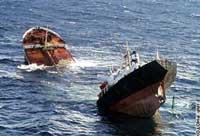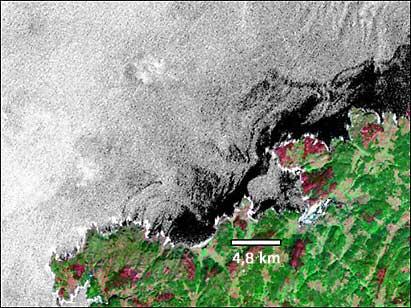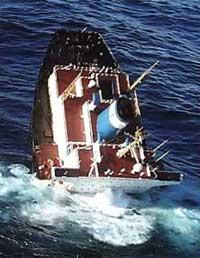Prestige cleaning. Oil Extraction Initiative
2004/04/25 Kortabarria Olabarria, Beñardo - Elhuyar Zientzia
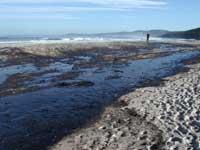
The Prestige vessel was split in half on November 19, 2002. The tanker's bow sank to 3,800 meters and the stern was slightly higher to 3,500 meters deep. The distance between both sections is three and a half kilometers. The Prestige transported 77.000 tons of fuel. More than half dispersed in the sea and reached the coast. Therefore, it was considered that 38,000 tons remained inside the tanker.
Considering the danger that there is so much fuel under the sea, it was decided to extract the fuel. However, the Prestige tanks are at great depth. It can also be said too big, as this kind of dangerous work has never been done at such great depth. Therefore, the company Repsol-YPF, with the collaboration of international experts, designed a concrete project based on the work of robots. They would go down to the water, reach the tanks, drill and pull out the fuel by gravity.
For this project four robots of two types were made. The first days of last July were tested at a depth of 4,000 meters and saw that robots were able to work together.
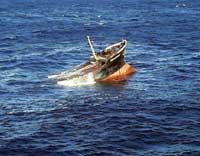
The first task of the robots was to locate, clean and seal fuel leaks. After eleven days of activity, the most significant leaks were sealed. The fuel that escapes the ship today does not reach 10 kilos per day. Before the work of the robots, every day there were 700 kilos.
They also wanted to know the amount of fuel left in the bow of the boat. A device called neutron was used to measure this amount. This instrument emits neutron flow. Neutrons lose energy as they pass through the hull and traverse the fuel. The fuel responds by sending gamma radiation, whose intensity varies according to the composition. In this way we can know the proportion between carbon and oxygen present in one place, high proportion in hydrocarbons and low in water. This measurement system was used in the outer tanks of the vessel.
To measure the interior, the robots had to drill the tanks, place blind tubes and put the neutron apparatus through the tube. After the measurements a total of 13,800 tons of fuel were found, 24,000 tons less than expected. This means that these tons have already been dispersed in the sea.
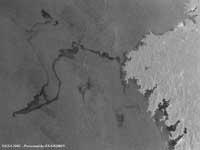
With these measurements the project came to the moment of starting to extract the fuel, for which the system called Hot Tapping was developed. It was one of the most important moments, because, despite its high viscosity, it still behaved like fluid. This means that if the tank is drilled it would slowly rise up. Before drilling the hull, the robots placed a double valve. A hole of 70 centimeters in diameter was then made. From this hole, however, no fuel came out because the valve closed it.
For the extraction of the fuel the bag was lowered on October 12 and tied with the valve. The bag was filled with fuel for 18 hours. During that time 125 tons were introduced in the bag to have enough project.
They wanted to immediately remove the bag from the water, but due to the inclement weather, they had it submerged for two days. He took out the bag and climbed onto the Enterprise. This boat is semi-perable and is almost 160 meters long and 30 meters high, but to be able to take out the bags have had to make some changes. In the same boat the bag broke, but the fuel was not poured into the sea. The ship transported the extracted fuel to Ferrol and from there, with trucks, was transferred to La Coruña, a refinery. Consequently, the pilot project was completed.
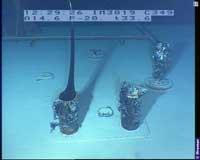
Spring comes and soon they start to extract the fuel from the Prestige. Three more valves will be placed in the container. As in the pilot project, the robots will do all the work underwater, in addition to emptying the bags, as they will take the 40 meter deep fuel to the Enterprise boat with pump. The bags will be harder and bigger than those used in the pilot project: They will have a height of 25 meters and a diameter of 5 meters. They will be able to transport 300 cubic meters and will be made of aluminum. In order to reduce the risk of discharges, during the working time will be counted at all times with the help of other vessels to take security measures.
As seen in the pilot project, if all goes well, it will take approximately 145 days to extract the remaining fuel in the Prestige tanks.
Published in 7K.

Gai honi buruzko eduki gehiago
Elhuyarrek garatutako teknologia



